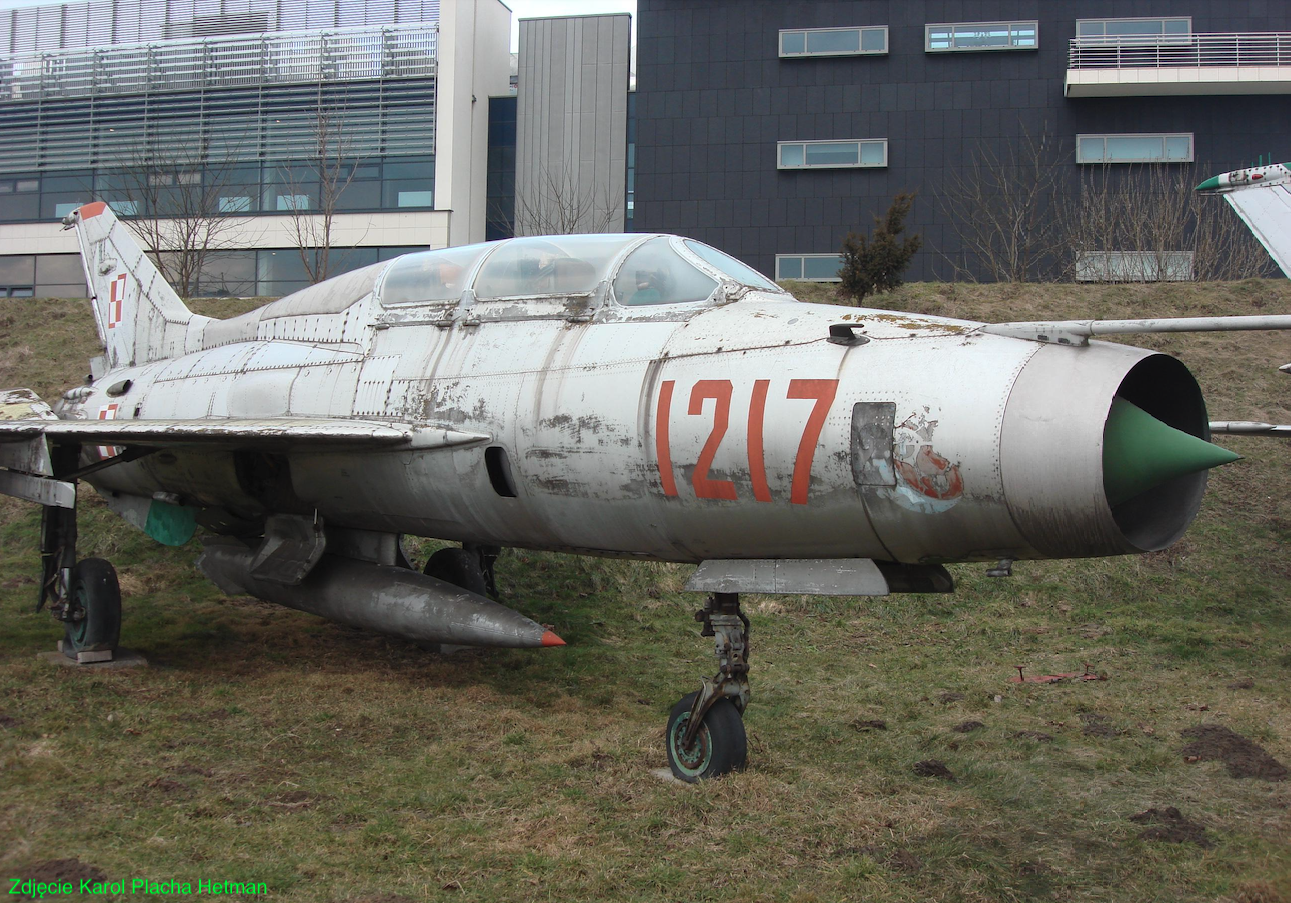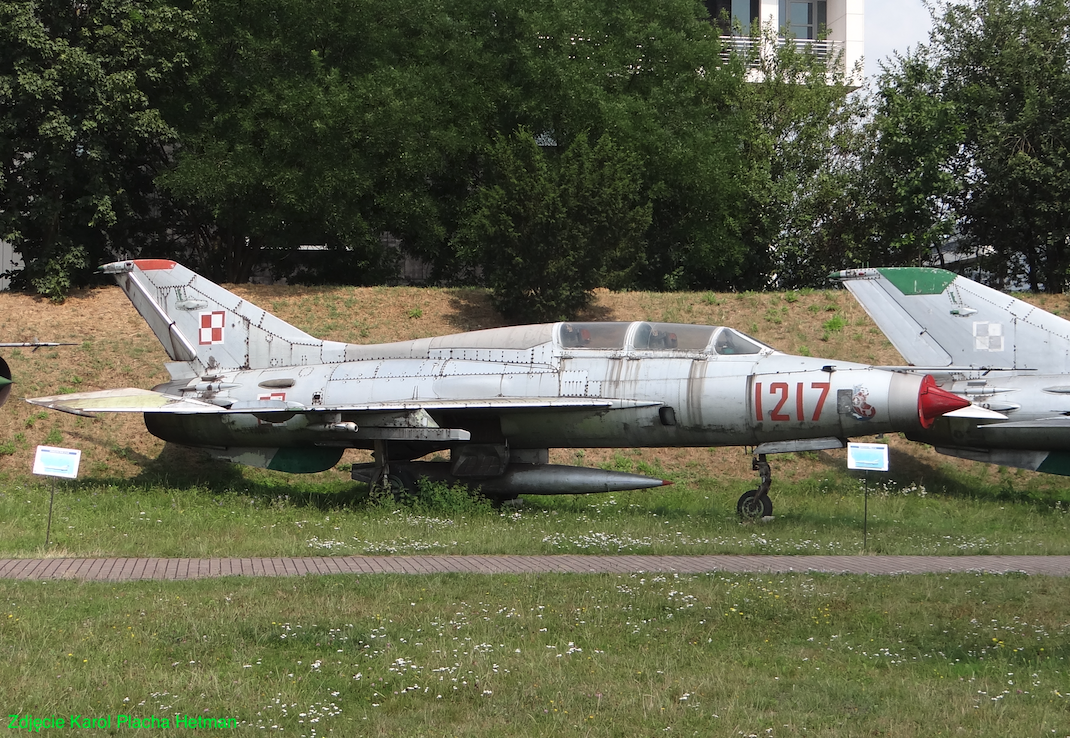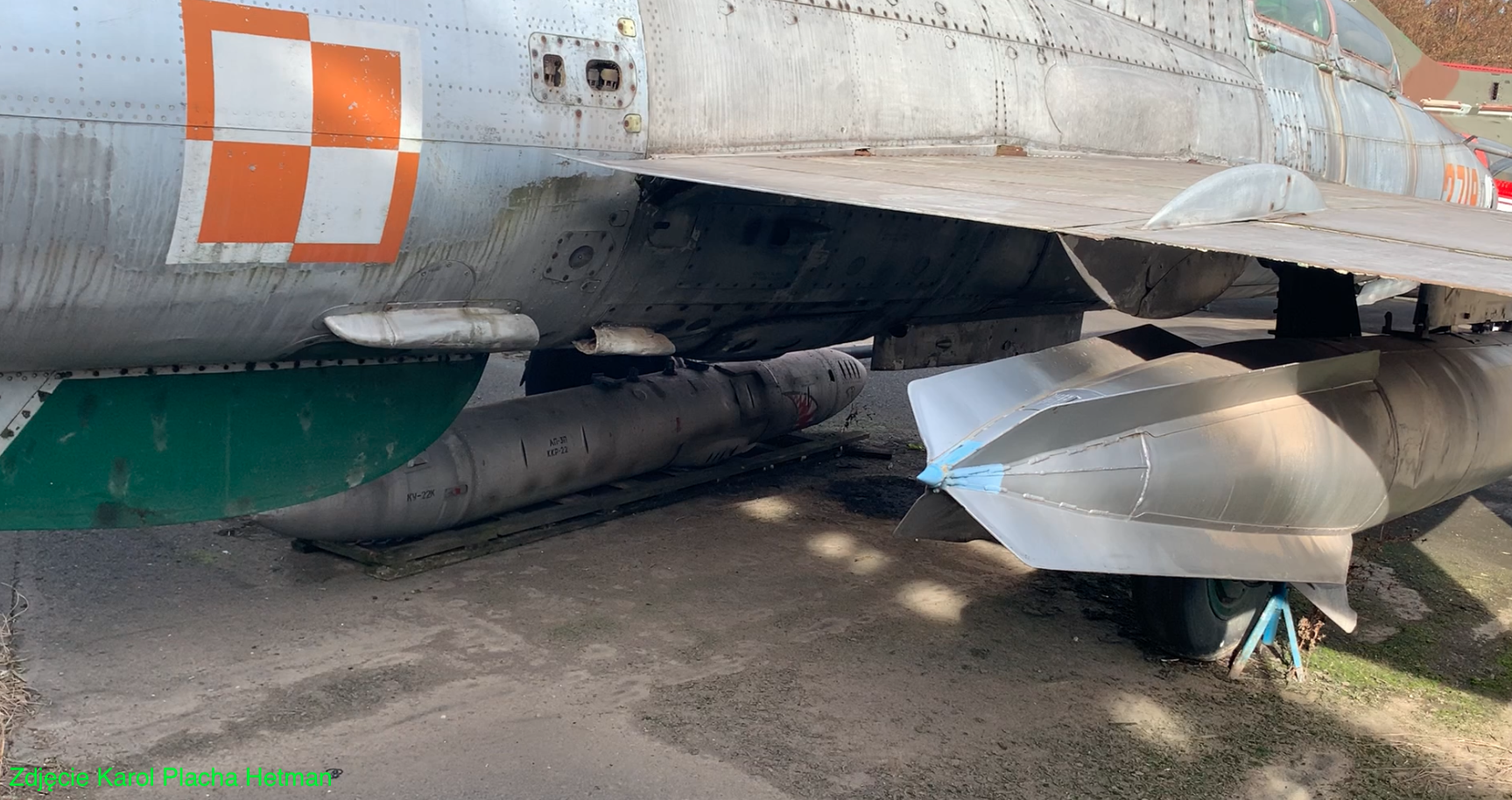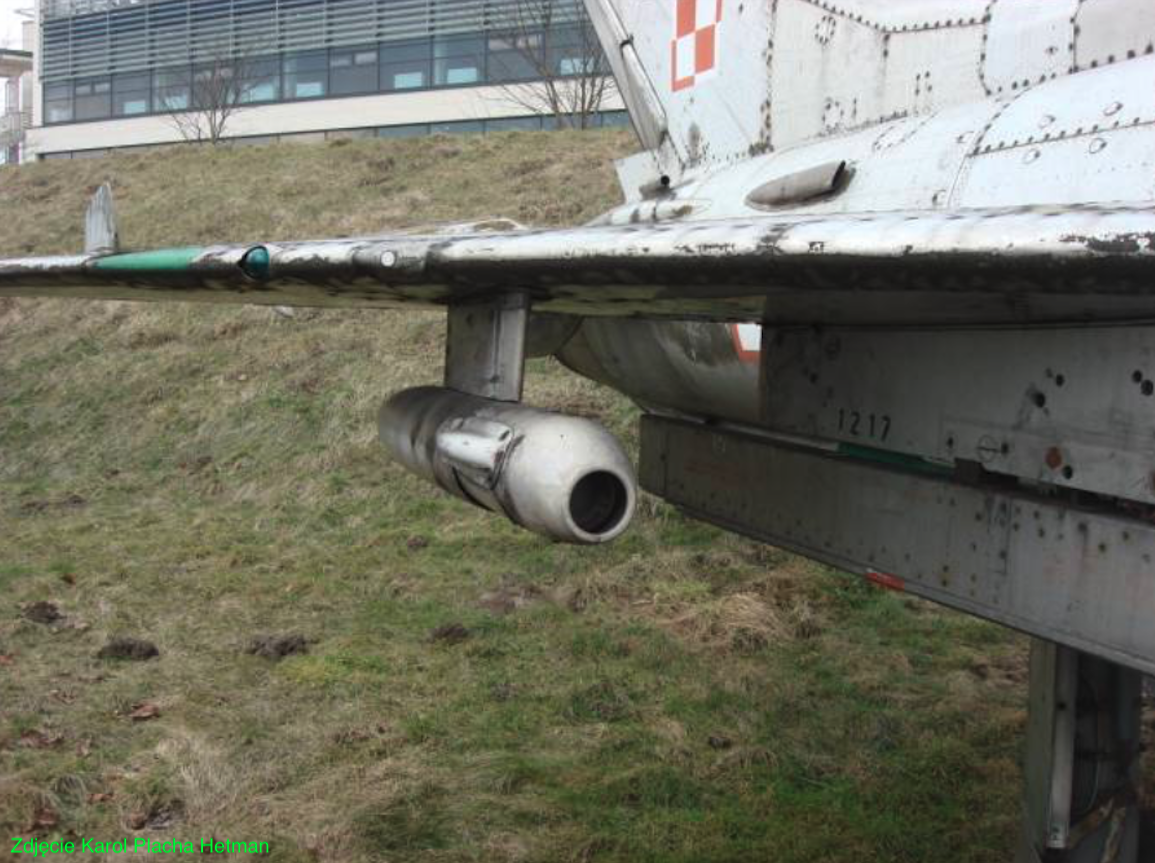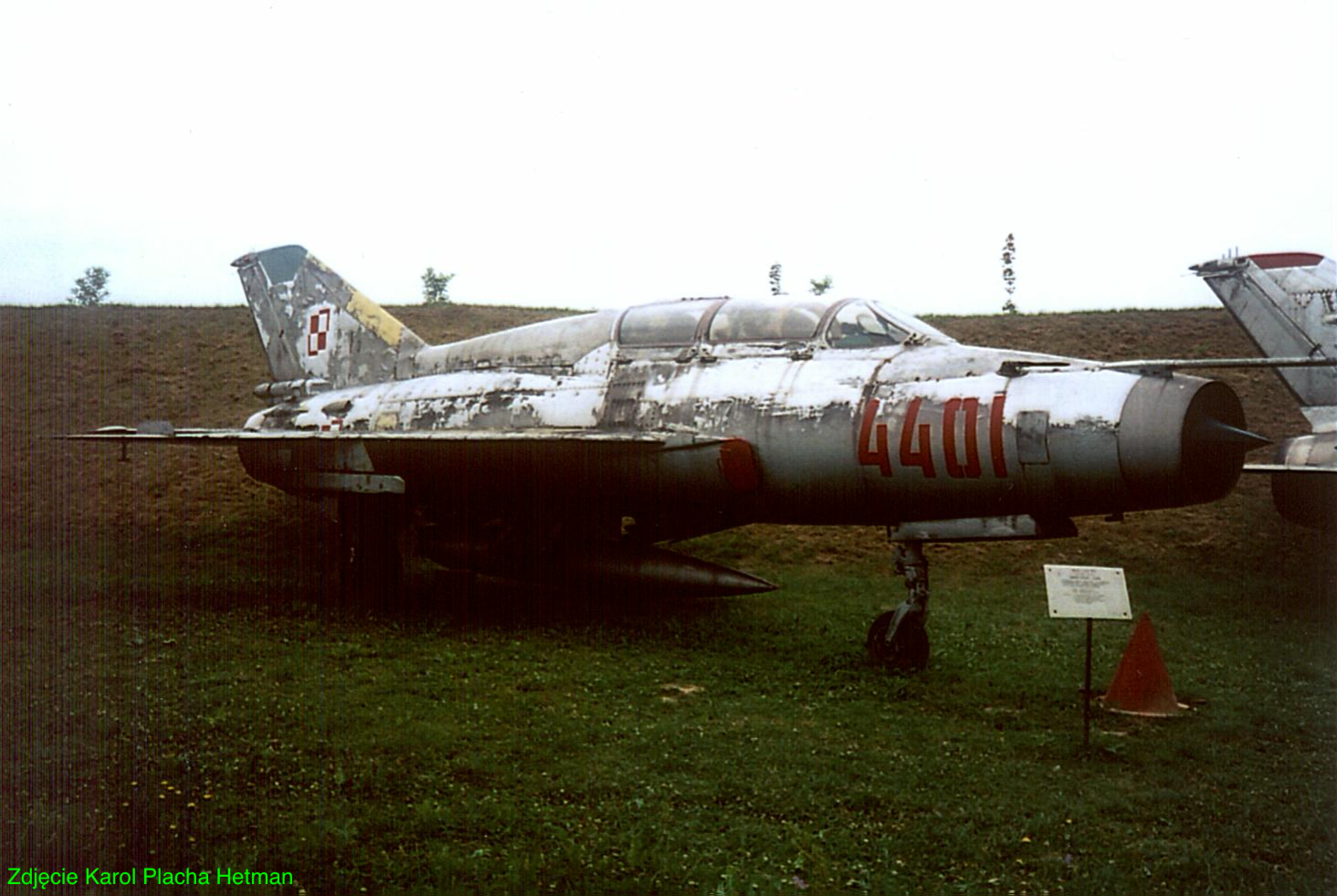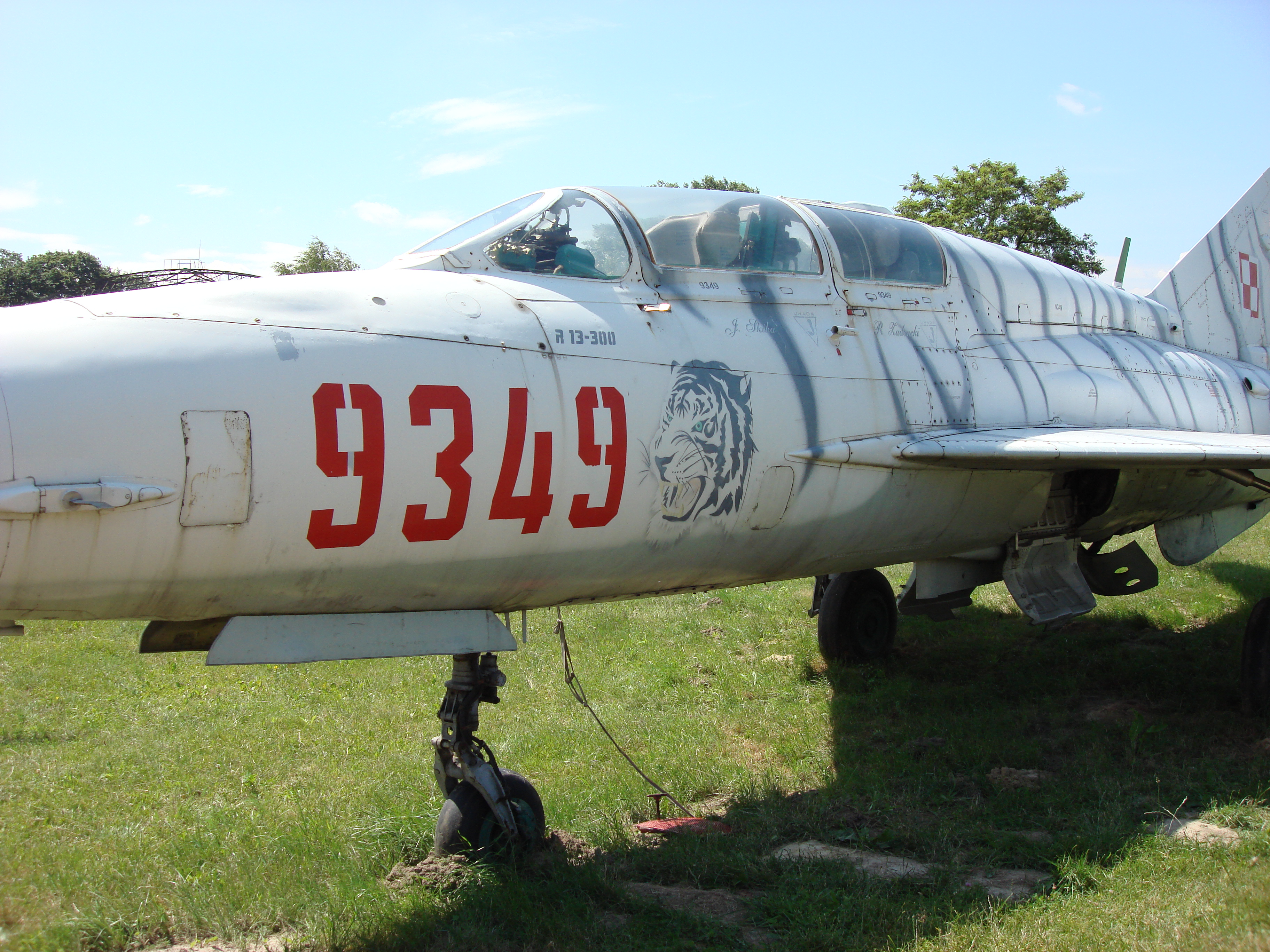Kraków 2009-04-21
Mikojan i Guriewicz MiG-21 U, US, UM.
193b Section 1965-05-18. Poland. A supersonic trainer aircraft used in the Polish Army.
MiG-21 U design.
The MiG-21 U was the first training version purchased by Poland. The plane is based on the design of the MiG-21 F-13 aircraft. Two varieties of these planes were delivered to Poland; the first 400, the second 600. They differ in the vertical tail (smaller and larger surface) and the place where the drogue parachute is placed (under or above the engine exhaust nozzle).
The cabin has glazing consisting of a fixed windbreak with three windows (front armored) and two separate fairings. Each remote control has a separate one. The fairings are manually tilted to the right side.
The plane has no permanent gun armament and does not have the characteristic bulges on the lower part of the fuselage. However, it was allowed to carry small arms in the form of a container with an A-12.7 machine gun, suspended under the fuselage or wings. Usually, the tank was suspended under the wings, because an additional fuel tank was mounted under the fuselage. The A-12.7 12.7 caliber machine gun was developed by N. M. Afanasyev and adopted in 1953, being used in helicopters (Mi-4, Mi-6) and combat training versions of fighter aircraft (UTI MiG-15). and all MiG-21 training and combat aircraft.
Basic data A-12.7; weapon weight 28 kg, cartridge weight 0.125 kg, bullet weight 0.049 kg, rate of fire 800 – 1,100 shots per minute, initial speed 835 m/s, the modernized version A-12.7P has a higher rate of fire of 1,400 shots per minute. The A-12.7 automatic system involves the intake of gases from a side hole in the barrel. The barrel is closed using a special wedge that moves vertically. The high rate of fire was achieved by using a mechanism that accelerates the delivery of the ammunition belt.
A photo gun was installed as permanent equipment of the MiG-21 U aircraft. The example presented in Czyżyny has two photo guns permanently mounted under the wings, more or less in the place where since the MiG-21 R combat version the second pair of hooks was mounted under the wings.
MiG-21 US design.
MiG-21 US was the second training version purchased for Poland. The MiG-21 US variant belongs to the second generation of MiG-21 aircraft. Training and combat version for aircraft with SPS wing flap airflow installation. In addition to the installation and the appropriate engine, the plane received a KM-1 U ejection seat in the first cabin and a KM-1I ejection seat in the second; opening periscope for the KKO-5 instructor; enlarged over-hull tank, total capacity is 2,450 liters. The equipment has also changed.
MiG-21 UM design.
MiG-21 UM was the third training variant purchased for Poland. It is an aircraft adapted to train pilots of the third and fourth generation of MiG-21 combat aircraft. The main changes compared to the previous version consisted in the use of new equipment.
The following damage could be imitated on the MiG-21 UM aircraft:
Using PIO-155. a) damage to the autopilot in the longitudinal channel, characterized by a sudden change in the pitch angle for climb or dive (as a result of forcing the RAU control shaft to move to the extreme position for climb or dive, respectively + corresponding change in the position of the trimmer mechanism); b) damage to the trim mechanism in the longitudinal channel for climbing or diving with the AP "Stabilization" range enabled; c) damage to the autopilot in the transverse channel, characterized by a sudden change in the roll angle (as a result of forcing the RAU control shaft to move to the extreme left or right position) with the AP "Stabilization" range enabled; d) damage to the autopilot consisting in breaking the rigid feedback separately in the pitch and roll channels, resulting in the excitation of undamped swings in these channels.
Using IP-K. a) damage to the speed indicator or simultaneous damage to the speed indicator, altimeter and variometer; b) damage to the artificial horizon; c) damage to the exchange rate system; d) damage to the radio compass.
As for the engine, the MiG-21 UM version was certainly equipped with R-13 engines. However, we do not know whether all or only the planes from the second delivery, i.e. from the period 1980-1981.
Written by Karol Placha Hetman

